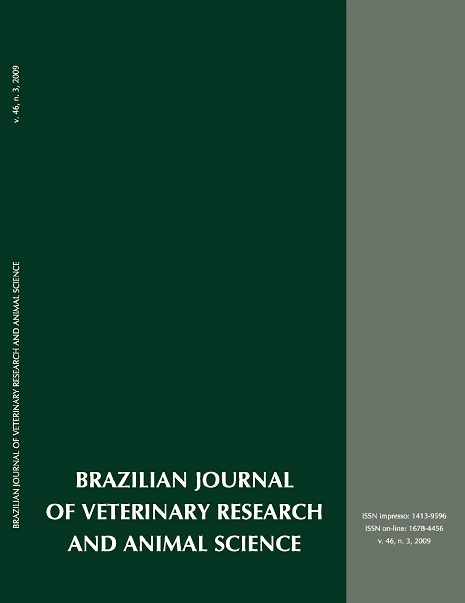Prevalence of Toxoplasma gondii antibodies in ostriches (Struthio camelus) from commercial breeding facilities in the state of São Paulo, Brazil
DOI:
https://doi.org/10.11606/issn.1678-4456.bjvras.2009.26764Keywords:
Toxoplasma gondii, Ostrich, MATAbstract
Toxoplasmosis is widespread zoonosis caused by Toxoplasma gondii , a protozoan that may infect mammals and birds. The aim of the present study was to assess the prevalence of T. gondii in ostriches (Struthio camelus) from commercial breeding facilities in the state of São Paulo, Brazil, in a way to increase the knowledge on the behavior and importance of the parasite in this animal species. A total of 195 serum samples were collected from ostriches from Sorocaba, Campinas, São Carlos, Araçatuba, São Paulo, Vale do Ribeira, Botucatu and são José do Rio Preto, in the state of São Paulo. These samples were analyzed by means of the Modified Agglutination Test (MAT) in order to investigate the occurrence of Toxoplasma gondii antibodies. The test showed that 14.36% of the animals were seropositive to Toxoplasma gondii. Minimum titer was considered to be equal or greater than 1:16, and the greatest dilution observed was 1:16,384. No statistically significant differences were found between males and females. Seronegative animals occurred in only two regions (São Paulo and São José do Rio Preto). These results point out the importance of further studies on this infection in ostriches, and on management practices that may minimize the risk of toxoplasmosis transmission in these birds which would, in their turn, decrease the risk for the final consumer.Downloads
Download data is not yet available.
Downloads
Published
2009-06-01
Issue
Section
UNDEFINIED
License
The journal content is authorized under the Creative Commons BY-NC-SA license (summary of the license: https://
How to Cite
1.
Contente APA, Domingues PF, Silva RC da. Prevalence of Toxoplasma gondii antibodies in ostriches (Struthio camelus) from commercial breeding facilities in the state of São Paulo, Brazil. Braz. J. Vet. Res. Anim. Sci. [Internet]. 2009 Jun. 1 [cited 2024 Dec. 29];46(3):175-80. Available from: https://revistas.usp.br/bjvras/article/view/26764





